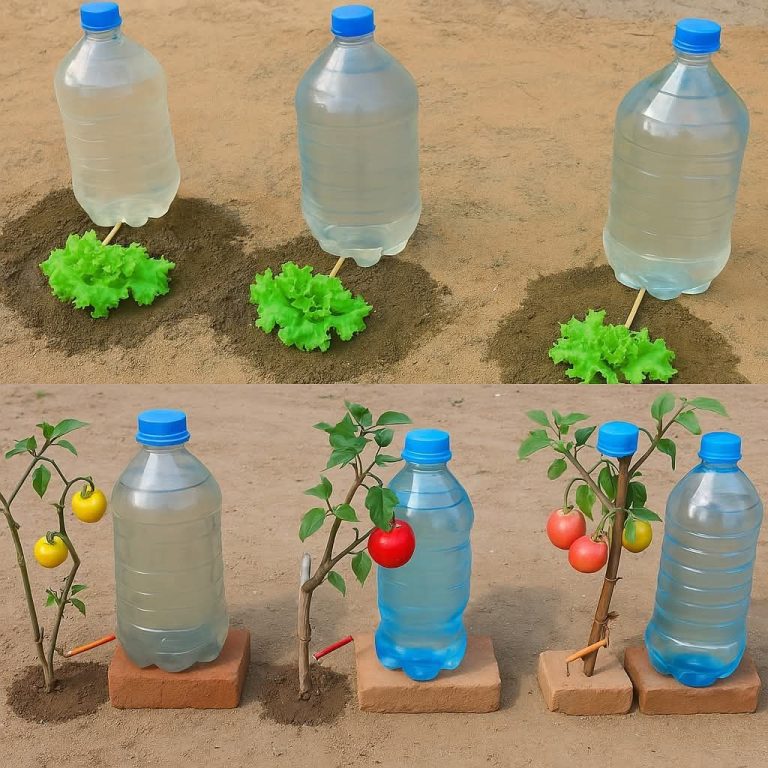ADVERTISEMENT
If you plan to stay on vacation for more than 7 days, you'll need to follow some special precautions. Using the communicating siphon method, you can build a simple DIY irrigation system. Take a large bottle for each plant, or a bucket if you have several plants to water. Place them near the plants but at least 10 cm higher than the pots. Now take strips of braided wool or filter mats available at garden centers, so that one end remains at the bottom of the bucket and the other about 2 to 3 cm deep in the soil of your plant. Before doing this, moisten the fabric. If the pot is large enough, place several strips per pot.
11) The Filter Mat Method
This system should also be used when you can't tend to your plants for more than 7 days. Purchase a filter mat, sold in garden centers. Prepare a basin and fill it with water. Now take the mat, water it according to the levels indicated on the instructions, and place it on a flat surface such as the kitchen sink. Part of the mat will be submerged in the basin, which must be at a lower level than the pot of the plant to be watered. The other end of the mat will be directly under the vase. This way, the water will rise by capillary action into the soil and water your plants.
12) Gel and Drip Irrigation System
For much longer vacations, choose gels that gradually release water once placed in the plant's soil, or a drip system. This is useful if you have a patio or many plants to water, as it's timed and allows you to avoid wasting too much water.
13) How to revive dried-out plants
With the arrival of extreme heat and boiling temperatures, plants can sometimes dry out beyond repair. Before throwing them away, always check the condition of the roots. This way, you'll know if you can save your plant or not.
After a heatwave, rehydrating plants isn't an impossible task. What do you need to revive them? It's very simple: an hour of free time and a bowl of water. However, before attempting anything, check the condition of the roots carefully: if they're still firm, it's worth reviving them. 14) Drill the soil and soak the plant in a basin
When the soil becomes very dry, it must be rehydrated with great care and patience. Rapid and abundant watering would only create stagnation at the bottom, and the plant would not be fully watered. Bringing the roots and soil back to a suitable moisture level is really simple. Simply drill a hole in the compacted soil, being careful not to damage the roots, and place the plant, along with the pot, in a basin filled with water. After an hour, it will be properly rehydrated.
15) Trim the dry parts and spray the green parts
After removing the plant from the basin, drain off the excess water. It is also important to trim all dry parts. Dead leaves, branches, and flowers must be removed so that the plant can fully regenerate. To finish moisturizing your plants, remember to spray the green crown with distilled or rainwater. Then, avoid placing the shrub in too much sunlight. It's better to place it in a cool, shaded spot while it waits for it to bloom again.
It's your turn...
Was this article helpful? Feel free to share it.with your friends on Pinterest!
ADVERTISEMENT
